
Citation: Tidjani A, et al. Characteristics of the Street Food Sector in N'Djamena, Chad. Food Sci Nutr Technol 2017, 2(3): 000123.
*Corresponding author: Abdelsalam Tidjani, Laboratoire de Recherches en Sciences des Aliments et Nutrition (LARSAN), Faculté des Sciences de la Santé Humaine (FSSH), Université de N’Djamena, Tchad, Tél: (00235) 66352119/ 95742125, Email: abdelti@yahoo.fr
Preparation and sale of street food is a sociocultural fact in Chad. Since one decade, this activity has a remarkable growth due to galloping urbanization of our cities and especially to N’Djamena city, capital of Chad. However, the organization of this activity causes great hygienic risks for these foods thus impeding their great nutritional and socioeconomic importance. The objective of this study is to examine the socio-demographic, economic and organizational characteristics of street food sector. From December 2013 to April 2014, 809 sellers and 455 consumers were surveyed by the quantitative technique in the public squares of N'Djamena. Our study found that 65.51% of producers are between the age of 21 and 40 years, and women represent 63.04% of producers. The 65.39% of producers are married and 99.01% of producers work in the informal sector. Our study found also that 57.11% of sellers devote their profits to the maintenance of their families. By sex, overall proportions of males producers and consumers were 36.96% and 85.50%, respectively, overall proportions of females producers and consumers were 63.04% and 14.50% respectively for women (Significant difference, p = 0.001).
The formalization of this activity is more than necessary to limit the health risks for consumers and strengthen the economic base of the sellers. It is obvious that formalization of this activity gives socioeconomic importance to street food sector.
Keywords: Street food; Characteristics; Socio-demographic; Economy; N'Djamena
In recent decades, African countries, particularly those in Central Africa, are confronting to rapid urbanization, with annual urban growth rates estimated at 3.31% and 4.29%, respectively [1]. This urbanization unplanned pushes the populations of these cities to develop survival dynamics among which the street food sector is a palpable illustration. Every day, in cities of Asia, Africa and Latin America, thousands of people turn to food prepared, sold and often eaten on the street [2]. Defined as food or beverage ready for consumption prepared and/or sold by vendors and hawkers especially in streets and other public places [3], street foods include all sexes, age and all socio-professional categories. Many studies conducted in Africa have shown that between 70% and 90% of street food vendors are females and between 58% and 95% of consumers are males [4]. Many people express their food freedoms through the foods offered to them on the street, and at the same time discover dishes that are not usually offered to homes for multiple reasons. Several studies have shown that the sphere of street foods is decisive because of its socio-economic and nutritional importance [2-6].
It should also be noted that, despite the risks associated to go bankrupt and sanctions of health police officers, this sector remain dynamic because the vital social functions it fulfills. However, food safety is a concern of the World Health Organization (WHO) and WHO considers that data on food safety elements from African regions are still few and do not accurately reflect the situation [7]. Some studies have shown that the main causes of the unhealthy nature of these foods that cause illnesses related to contaminated foods originate from failures to comply with good hygiene practices for processing, cooking, preserving or selling these foods [8-13]. Thus the spatiodemographic evolution in N'Djamena has been dazzling in recent decades. The rate of natural increase from N'Djamena is 2.9% [14]. As in other African cities, the expansion of N'Djamena’s population and many daily constraints faced by N'Djamena people have led to an increase in the number of vendors of street food in recent years. This sector, which represents an opportunity for both sellers and consumers, remains little known in Chad and deserves careful consideration of the social, economic, cultural and organizational aspects that surround it.
The aim of this work is to study the socio-demographic, economic and organizational characteristics that generate the outbreak of the street food sector in Chad.
Material and MethodsThis was a prospective and descriptive study which consisted of two main phases, namely the quantitative phase which concerned general information about the actors and the qualitative phase scrutinizing the conditions under which this activity was carried out. The study was carried out in N'Djamena, capital of the Republic of Chad, located between 12°8' north latitude and 15°2' east longitude to the southwest of Chad. With a population of 951 418 inhabitants in 2009 [14], this same population was estimated at 1 157 364 (INSEED) in 2013. The pre-survey period spread from November to December 2013. The surveys took place from the end of December 2013 to April 2014. The main targeted sales sites are the markets, primary schools, secondary schools, colleges and similar, industrial zones, railway stations (taxi and travel), administrative areas, avenues and heavy axes.
N'Djamena subdivided in ten districts which comprise sixty-four quarters distributed unevenly. Among ten districts, eight were drawn at random for this study. Accounting for points of sale in these districts was made in three parts. First counting was made in the morning from 06H30 to 09H30, a second counting from 11H30 to 15H00 and a third counting from 17H00 to 21H00. In total we counted 2133 points of sale.
Study Population, Data Collection and Sample SizeThe sample size was estimated by the simple random sampling method using ɛ = 1.96 for an accuracy α = 5%. With this method we found 75 sellers and 140 consumers. However, the interview took place with 809 sellers and 455 consumers. As far as the seller is concerned, the questionnaire dealt with age, sex, marital status, level of education, occupation, capital, daily gain, profits, etc. As far as the consumer was concerned, the questionnaire also included age, sex, marital status, occupation, level of education, etc. Once we arrive in a neighborhood, we place ourselves in the center of the neighborhood in relation to the directions of the neighborhood leader and one of the four cardinal corners is drawn at random to allow us to choose the direction where we will begin the interviews. The rest of the journey took place according to the direction of the clock hand until the neighborhood was covered. Once at the point of inquiry, the different sellers are coded and drawn according to the predefined number. The same operation was carried out for consumers. The persons selected to answer our questionnaires received a brief overview of the purpose of the work and the interview was only carried out after the person's approval.
Data Processing and AnalysisThe data collected were entered and analyzed using the Excel 2013 software. They were treated with regard to age, sex, marital status, occupation, capital, daily earnings, destination of profits, education level of producers and consumers. The chi-square test (χ²) was used for the comparison of qualitative variables with a significance level set at 5%.
Results and Discussion(Table 1) presents the proportions of producers and consumers according to the different age groups. Producers in the age groups 21-30 and 31-40 have a cumulative proportion of 65.51%. The average age of producers is 32.70 years. This finding agrees with several other studies [15-17]. Our values can be explained by the fact that it is an activity that requires a lot of physical effort and of course it is the age range where man is in his physical bliss except for particular health problems. The majority of consumers belong to the age groups between 10 to 20 years and 21 to 30 years who cumulate the 66.37% of the respondents. The average age of consumers is 28.75 years. This result is similar to those of Tidjani et al. [11].
In Table 2, the results of our surveys note the strong presence of women in the production and sale of street foods in N'Djamena (Chad) with 63.04%. This finding has been made in several countries through similar studies [5-22]. A few exceptions reveal a predominance of men in the sale of street foods [23,24]. In our study, increasing number of women in the street food sector could possibly be explained by cultural background in Chad where the woman is still perceived as the housewife and that one who deals with the maintenance of food of the family. Nowadays, chadian woman taking pride to monopolize of culinary activity. This study shows that street food consumers are predominantly males with a representativeness of 85.50%. This situation is reported by several other studies [5-15].
In Chadian society, a woman is supposed to prepare and eat at home and not to pay ready-to-eat food. This social weight is the main reason why women do not flock to these ready-to-eat food. Proportions of producers and consumers males are 36.96% and 85.50% and 63.04%, and proportions of producers and consumers females are 14.50%. These proportions give a significant difference (x2 = 276, dd1 = 1, p = 0.001). Table 3 shows that married producers account for 65.39% of respondents. Producers who preferred to remain discreet about their marital situations represent the 00.37% of the respondents. Our results corroborate those of several other similar studies [15-25].
Singles represent the 50.99% of consumers. It goes without saying that this category is more present because being unmarried at a certain age and with a certain independence, the only household to which they resort is the public places. Table 4 shows that the proportion of out-of-school producers was 54.26% and that of out-ofschool consumers was 36.70% (significant difference x2 = 228, ddl = 1, p = 0.001). This high proportion of illiterates in the street food sector was also proved in the works carried out in Ouagadougou, Bobo Dioulasso and N'Djamena [5-11].
Contrary to our results, some studies have shown that the majority of street food producers have at least the secondary level [18-26]. The low level of study of street food vendors in N'Djamena could be a constraint to sensitizing sellers to good hygiene and manufacturing practices. Out-of-school consumers are the most numerous with 36.70%. Consumers with the highest level represent the 08.57%.
Table 5 shows that the socioprofessional category which has a large influx of food sold in public places is that of traders with 42.86%. Traders often have to spend the whole day out of the house because of their activities do in fact only resort to cheap street food offered by these sellers.
Distribution of Staple Foods Sold by Producers, Producer Categories and Distribution of Sales Points by Sales SiteTable 6 reports that there is a wide range of foods sold in the public squares in N'Djamena. Food prepared from cereals (wheat, rice, maize, sorghum, millet) is sold by the 48.95% of producers. The average price for cereal-based dishes is 250 FCFA. Other foods such as locusts, eggs, tea etc. are sold by the 07.25% of producers. Our results are attested by the work done in Bobo-Dioulasso by Drabo et al. [15] and Tidjani et al. [11], who reported the presence of cereals in the proposed dishes. Contrary to our observation, work by other authors highlighted the prevalence of legume-based foods on the streets [19-26].
Figure 2 shows the different categories of producers. This result shows that the fixed producers account for 67.37% of the producers surveyed. The itinerant producers constitute the 10.63%. The strong presence of fixed producers revealed by confirms the work carried out in Owerri (Nigeria) by Chukuezi [19]. We can explain this by the fact that food preparation requires spatial stability, so preparing on the spot and selling is organizationally more judicious.
Figure 3 shows the distribution of producers according to sales sites. There are 29.04% of producers on heavy axes. The presence of producers is less marked in administrative areas with a frequency of 01.98%. The heavy axes, avenues and markets are the sites that close the majority of producers. We can explain this by the fact that these sites contain the majority of traffics, purchases and exchanges; hence the urge to sit down and fulfill an important need as food is too frequent
Organizational Characteristics of ProducersData on the organizational characteristic of street food producers in N'Djamena reveal that 00.99% of producers have an authorization to operate. The sale of street food is a previously informal sector [23,20]. This study reveals that 99.01% sellers operate without official authorization and therefore do not have a trade register. This can be explained by the fact that the majority of sellers (58.96%) do not have capital for their activities, so they practice in the informal sector because their businesses are not always stable. Producers with no capital for their activities represent 58.96%, the 09.40% of producers do not know what the capital means. The profits collected are used by 57.11% of producers to maintain their respective families, as confirmed by several other studies [5-23] improving their activities. These profiles also allow sellers to save money and launch into other projects.
ConclusionThis study made it possible to discover the very rich facies of the food sector of the street in Chad which until then has been little explored. The illiteracy of the majority of sellers and the predominant informal side in this sector constitute obstacles to the organization of this sector which is nevertheless of great nutritional and socioeconomic importance. The accomplishment of economic growth and the public health of a country in full vicissitude like Chad where a large slice of adults did not benefit from the vocational training, the organization of a sector like "Street food" that does not necessarily require advanced knowledge is needed. It is therefore essential for the Government to control all the data related to this activity in order to become more involved in the organization of this sector which has become an unavoidable at the sight of rapid urbanization in N'Djamena and the many occupations of inhabitants. This sector could also once organized, contribute significantly to the economy of the country. Although much has been done by the Government of Chad, which has financed the implementation of the Research and Support Project for Street Food Safety (PRASAR), which has made it possible to raise awareness of Good Practices Hygiene and food manufacturing, however much remains to be done to structure this sector which plays an important role both economically and nutritionally.
Conflicts of InterestThe authors do not declare any conflict of interest.
AcknowledgmentsThe authors would like to thank the coordination of the Research and Support Project for Street Food Safety (PRASAR) and all its investigators for their financial and technical support during the data collection. Our sincere thanks also go to the highest authorities in Chad country for funding PRASAR.
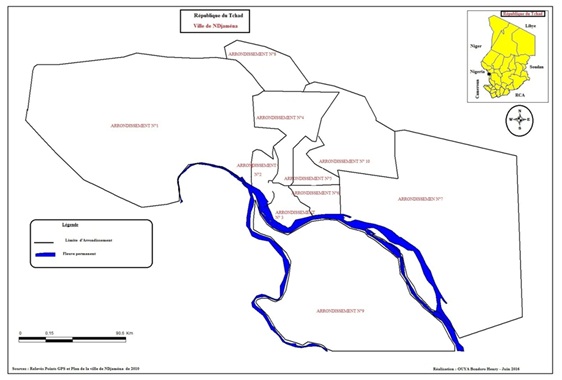
Figure 1: Site Map.
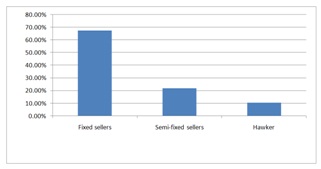
Figure 2: Distribution of vendors by category.
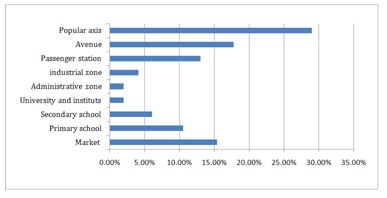
Figure 3: Location of the vending point.

Table 1: Distribution of vendors and consumers by age group.

Table 2: Distribution of vendors and consumers by sex.

Table 3: Distribution of vendors and consumers by marital status.

Table 4: Distribution of vendors and consumers by education level.
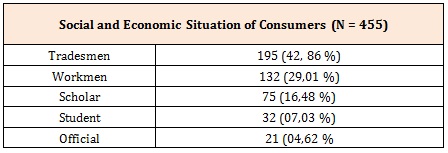
Table 5: Distribution of consumers by social and economic.
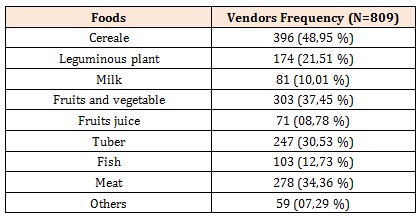
Table 6: Distribution of type of street food by vendors.
Chat with us on WhatsApp